RECOIL OFFGRID Survival Reading the Human Terrain
In This Article
Imagine walking into a coffee shop, scanning the room, and instantly understanding who is engaged, who is uncomfortable, and who might be paying a little too much attention to you. This isn’t about mind-reading or gathering some sort of “energy.” It’s about recognizing the signals people give off and using that information to navigate the world more effectively.
Many people think of reading others as something reserved for law enforcement, security professionals, or criminal profilers. The reality is that anyone can develop this skill, and it has practical applications in everything from personal safety, business negotiations, and on to the simpler things in life like family relationships. The key is learning to observe and interpret behavioral cues in a way that helps you anticipate what’s coming next.
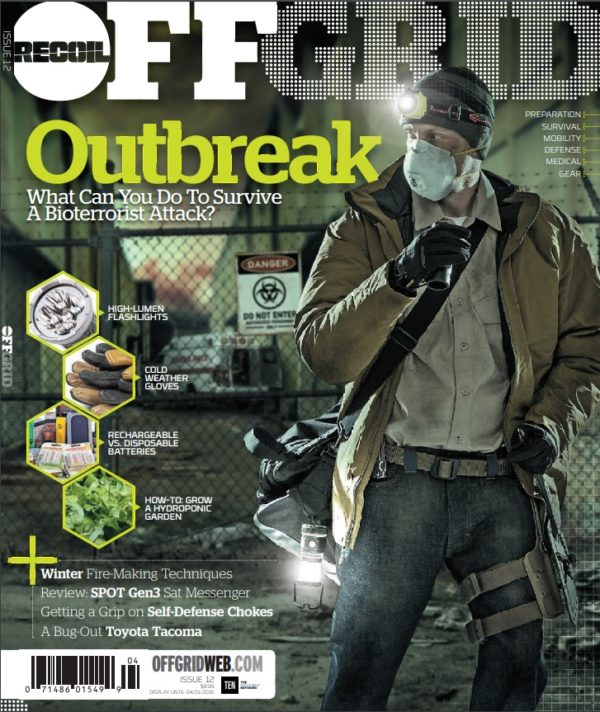
This ability doesn’t just keep you out of trouble. It can also help you recognize opportunities, build better relationships, and move through life with greater confidence.
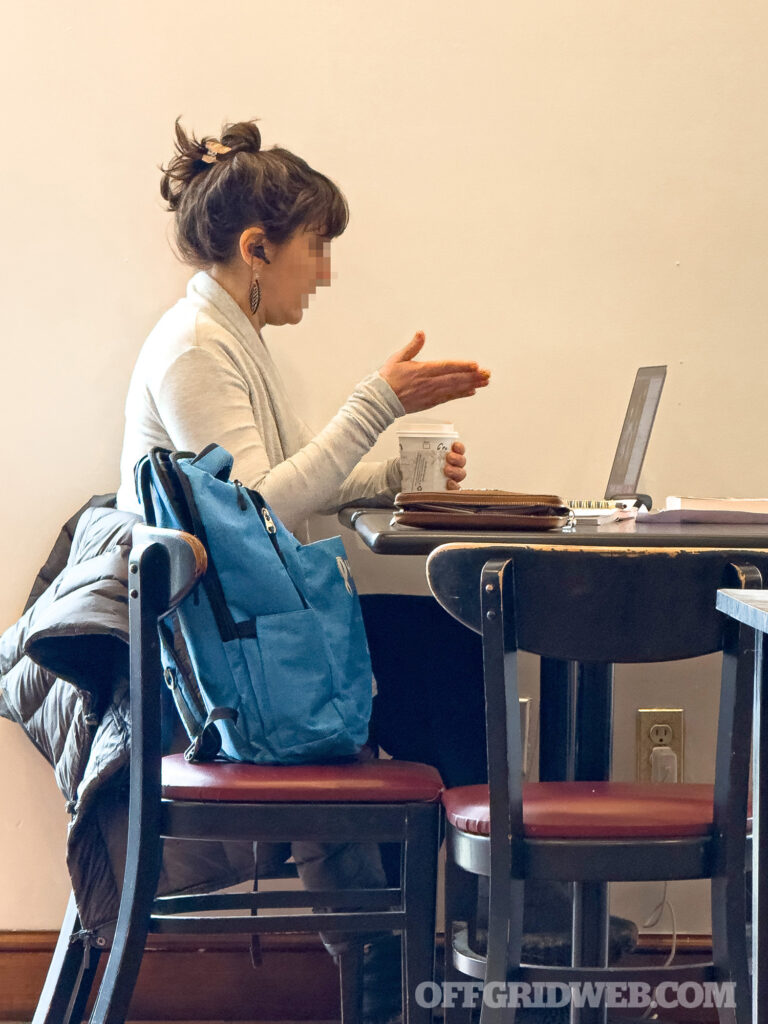
Open-handed conversations can occur in virtual meetings as well.
Proxemics is the study of how people use space and distance in relation to others. While it might sound abstract, proxemics is one of the most practical and observable tools you can use in public settings to read intent, dominance, or discomfort. This domain helps you assess relationships, social roles, and potential conflicts just by paying attention to how people position themselves and interact spatially. The following are several of what I think of as “low-hanging fruit” when it comes to this study. I have used these numerous times to determine who the “decision maker” is when it comes to business negotiations as well as recognizing when my wife and I are out of sync.
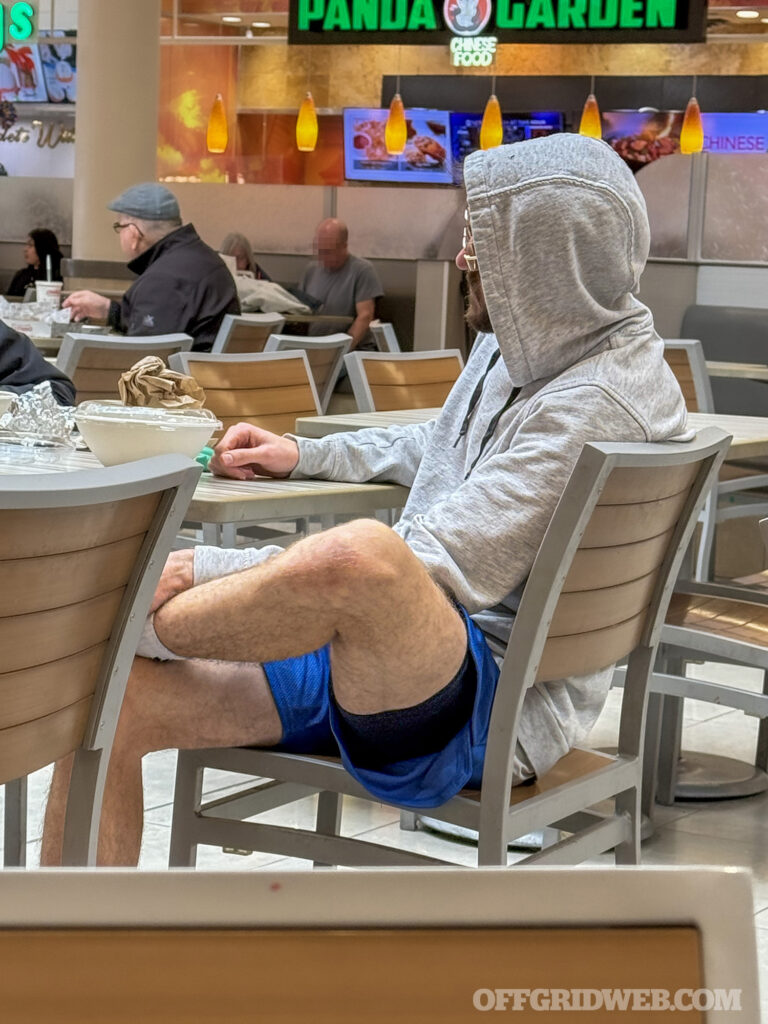
Covering of the head, crossed legs, and arms in front of torso likely indicates someone wishing to be closed off.
Push-&-Pull Movements
Push-and-pull movements are spatial indicators of comfort, trust, or disagreement. For example, when two people are engaged in conversation and face each other directly, they are likely in agreement. When one person begins to turn away or angle their body slightly to the side, they are “pushing” themselves out of the interaction. That physical withdrawal may indicate discomfort or disagreement. A pull, by contrast, might be seen when one person leans in, angles toward the other, or shortens the physical distance. This signals openness or trust.
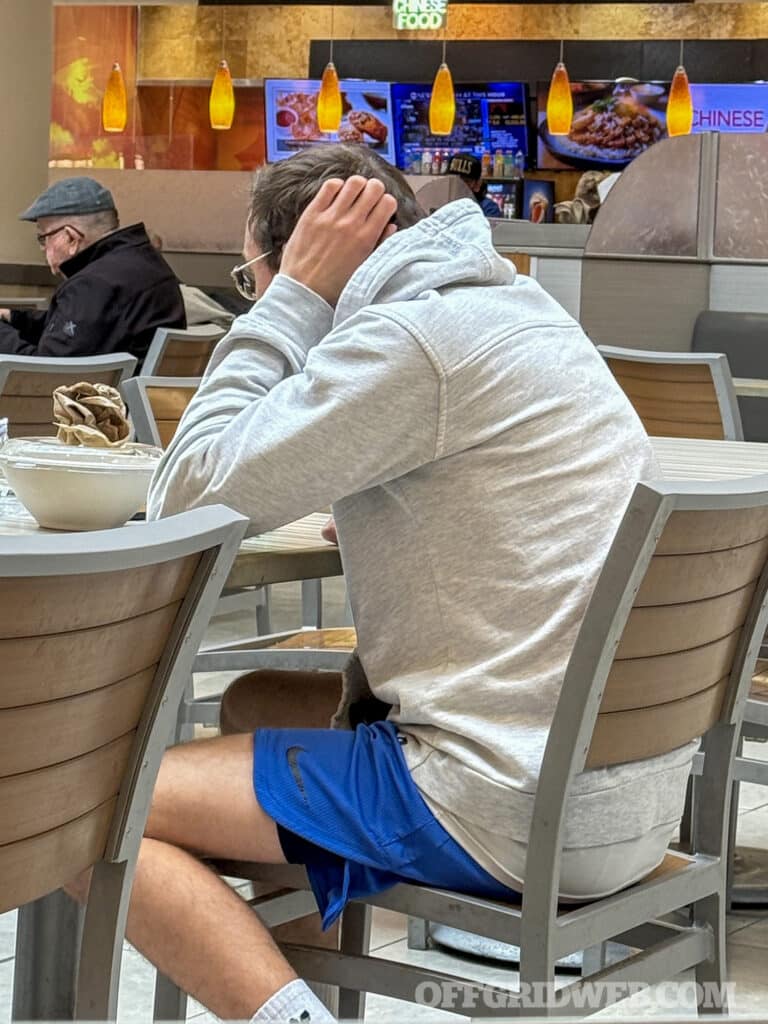
Hands on the back of the neck can be an indicator of stress.
These signals happen naturally, and the average person notices them subconsciously. By bringing them into conscious awareness, you can make better decisions about how to respond to people in real time. This is one of the easiest to recall as well because there is such an obvious physical reaction to this. I just remember that the more someone’s back is toward me rather than their front, the more they are disconnected.

Open-hand conversation is one where the person is inviting you.
Identifying Leaders & Followers
Within a group, the leader is not always the loudest or the one who has formal authority. Often, they’re the person others look toward before speaking or acting. In group dynamics, people will often physically orient themselves with feet, torso, or even just a glance toward the person they subconsciously defer to.
The leader may also use a tactic called “once removed” communication, giving orders only to a lieutenant or second-in-command, who then relays the message. This distancing elevates the leader’s social status within the group. Recognizing this can help you spot high value individuals (HVI) in security scenarios or decision-makers in business settings. For those reading who want to use this as a launching point for solid business negotiations with unknown parties, this is a critical observation to make. The decision maker is key, and you should focus your attention on working with them whenever possible. Or at least reading them to know when they are pleased or not. This may be obvious, but this is an excellent battlefield observation to make. Knowing who the leader is lets you know who the “head of the snake” is for battlefield tactics.

Upon sitting or standing, concealed carriers will often adjust their firearm.
Entourage, Mimicry & Adoration
Entourage is a formation in which one or more people follow another in a beta position. In these groupings, subordinates often show physical signs of deference. They may glance at the leader for approval, mimic their body posture, or show signs of adoration such as opening doors, standing when the leader enters, or bowing their head slightly during greetings.
Mimicry is a powerful sign of engagement. If a person crosses their legs and leans forward, and the other does the same shortly after, that is a sign of rapport. If one leans back and the other remains leaning forward, that could suggest disagreement or unease. Watch this play out at dinner tables, business meetings, or any casual social setting. The physical harmony or discord between people often mirrors their emotional states. Many years ago, when I first started into the practice of behavior analysis, I would do this sort of practice at restaurants regularly. It is a great way to people watch and see these things at play from one end of the spectrum to the other.
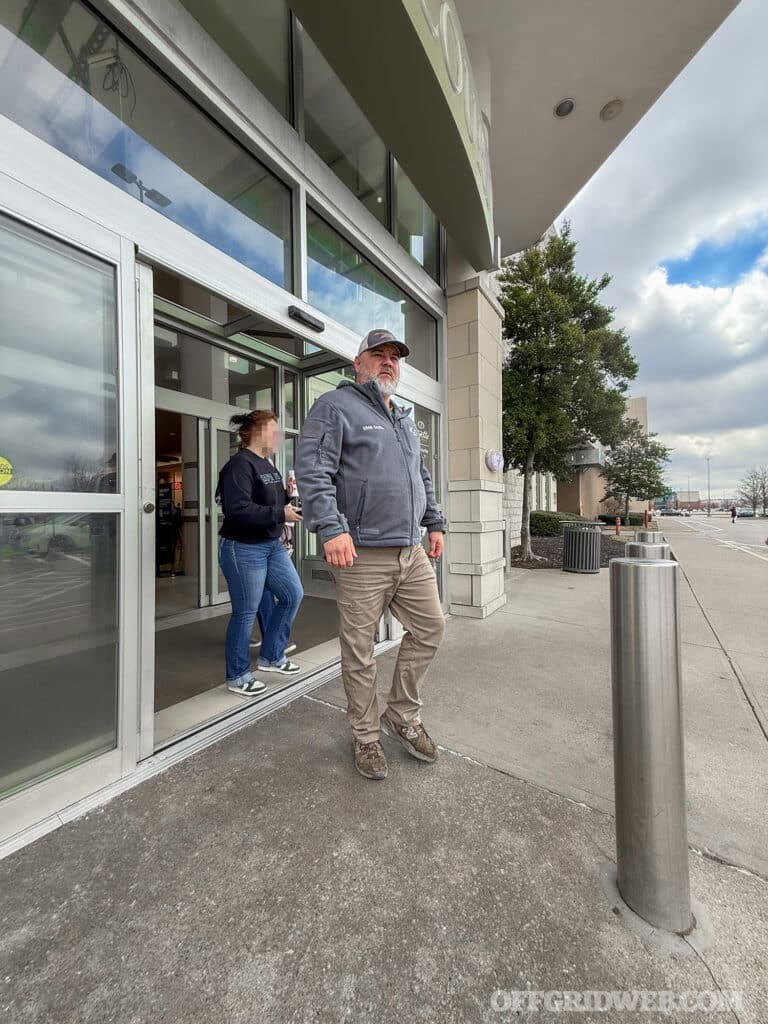
Scanning the environment especially at funnel spots, like common doors, is a sign of someone who is keyed into the awareness.
Cultural Considerations
Cultural norms affect proxemic cues. In North America, social distance tends to be greater than in places like the Middle East or Latin America. Knowing this can help you avoid misreading closeness as a sign of aggression or distance as a sign of disinterest.
In international contexts, be aware that certain gestures, like showing the bottom of your foot, can be deeply offensive. For many years I taught traditional martial arts and combatives. I will never forget training with an incredibly high-level Japanese instructor. I sat on the training mat with my legs outstretched and the bottom of my feet showing. A training partner, and good friend, quickly corrected me to tell me that it was rude in that setting. I should not have the bottom of my feet toward the instructor in that manner.

When one person in a conversation is not facing their partner directly it could, but not always, mean that they have mentally checked out of the convo.
Kinesics refers to body language, facial expressions, posture, and gestures. This domain is rich in detail and layered with meaning, especially when observed over time or within familiar contexts. Often you will hear this referred to as “tells.”
Self-Soothing & Defensive Behavior
Self-soothing gestures are small, often unconscious movements that indicate a person is trying to calm themselves. Common examples include rubbing the neck, scratching the head, wringing hands, or covering parts of the face. These can indicate stress, confusion, nervousness, or even deception. However, context matters. Someone might be rubbing their neck because of a cramp, not because they’re lying. That’s why it’s important to observe patterns rather than isolated actions. A single gesture means little on its own. But several signs stacked together can paint a clearer picture.
I, personally, will often rub my beard from mustache down to chin when I am uncomfortable or in deep thought. Understanding this has helped me when I am in negotiations or do not want others to know I am uncomfortable. I give serious and focused conscious thought to not doing that, so as not to give my mindset away. I hope it is obvious, but I am discussing these things as it relates to assessing others, but that goes the other way too. People will be assessing you. So, it is best to assess ourselves and fix the issues that we recognize are problematic.
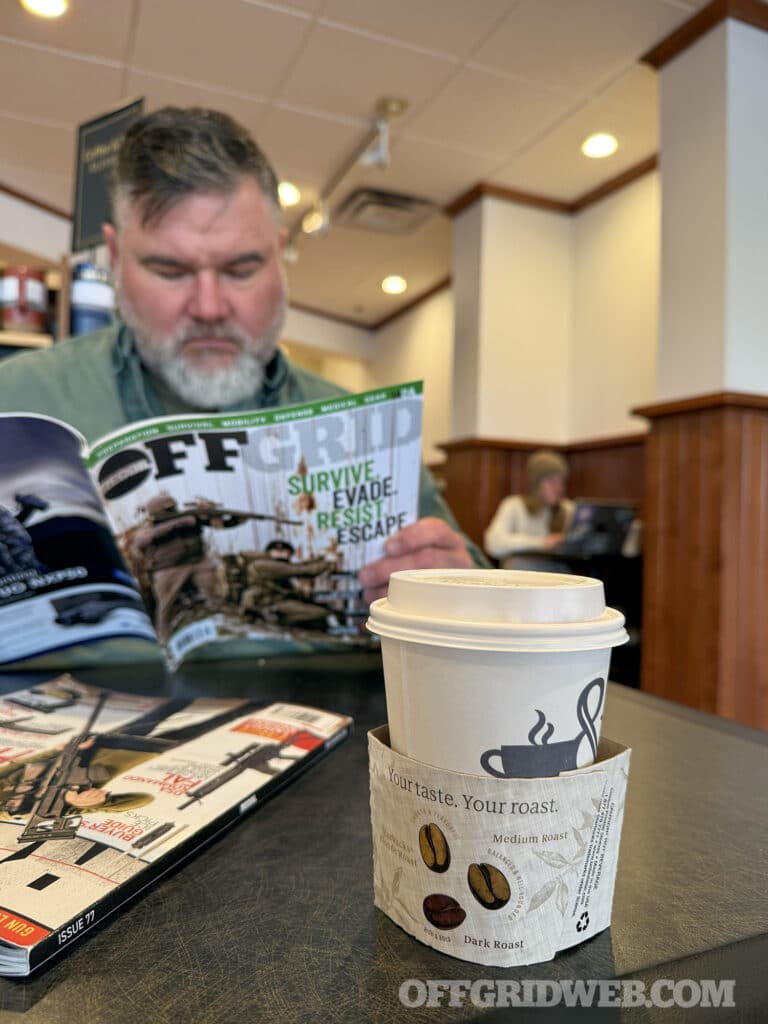
Don’t allow yourself to get focus locked on a book, phone or task while in public areas. Even if the magazine is a great one.
Eye Behavior & Blink Rate
Eye contact is often misunderstood. While prolonged eye contact can suggest confidence, it can also be an attempt to project control or dominance. Conversely, a lack of eye contact may not be dishonesty, it may be cultural or a sign of shyness.
One of the most objective cues is blink rate. Research shows that the blink rate increases under stress. If someone normally blinks 10 times per minute and suddenly increases to 40, something has changed. That shift could be anger, anxiety, or even an effort to maintain composure while lying. Establish a baseline whenever possible, then look for deviations. It is critical that you understand this is a baseline versus an anomaly sort of situation. There is no way to say what the average blink rate is for humans. We all have a blink rate that works for us. We must gather the baseline first, then recognize the change.

Wearing a heavy or long jacket when the temperature does not match the needs is an anomaly worth considering.
Toe & Hand Direction
Feet are honest. Unlike facial expressions, which we learn to control socially, the direction of our toes is involuntary. If someone’s feet are pointed toward the exit, even if they’re smiling and chatting with you, they’re mentally on their way out. Hands are another useful indicator. Open palms usually indicate honesty and a willingness to engage. Hands in pockets or hidden behind the back can suggest concealment, physical or emotional. If someone shows you their palms mid-sentence, especially with fingers splayed, they may be signaling you to stop, even if their words don’t say it directly.
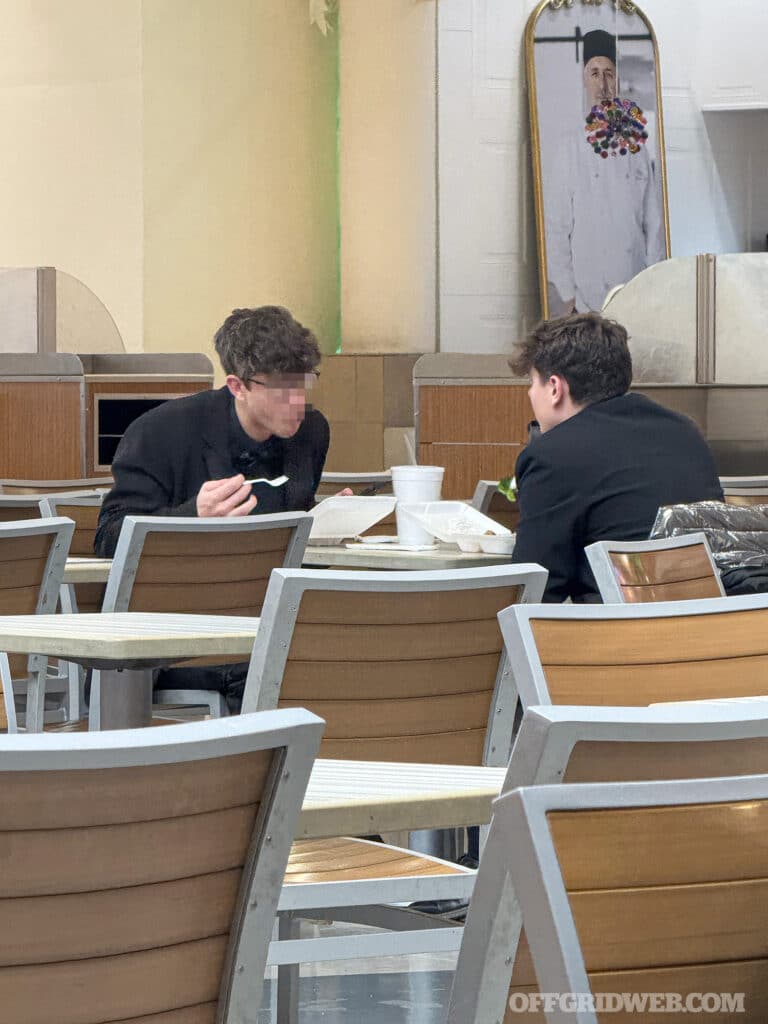
Mimicry is when people in conversation get in the same body positions. This typically means they are in agreement during the discussion.
Biometrics refers to involuntary physiological reactions. These include blushing, pupil dilation, facial tension, and other signs driven by the autonomic nervous system. Because people cannot easily control them, biometric cues are often the most reliable indicators of true emotional state.
Stress & Hormonal Cues
When a person is embarrassed or under stress, adrenaline causes blood vessels to dilate, especially in the face, neck, and ears. This results in blushing. Flushing, which covers a larger area, may come from anger, arousal, or even alcohol.
Conversely, stress can also cause the body to pull blood away from the face, leading to paleness. This is another sign of the body preparing for fight or flight.
Nostrils flaring and bottom teeth showing are instinctual signs of agitation. These cues often precede aggressive action and should prompt you to raise your awareness. This all occurs because a person is trying to get more oxygen into their bloodstream preparing for a physical confrontation. Most of our interactions that involve this are those that end up in disagreement and don’t get physical. The beauty of this is — and I use this regularly — when you recognize this happening, you can begin moving out of position and/or using “verbal judo” to calm a possible heated situation before it gets physical.

Hands in pockets is a sign of closing in or possible deception. Always watch hands.
Pupil Dilation & Heat Signatures
Pupil dilation can be caused by low light, drug use, or emotional arousal. Sudden dilation in normal lighting might indicate attraction, fear, or rising tension. So, if you are having that convo at a bar trying to engage a date, that is a good thing. But if you find out that date already has a boyfriend, and he is doing this, it’s a problem. This spectrum of understanding is critical to putting this to good use.
Changes in body temperature can also be detected. If you’re physically close to someone, you may feel heat radiating off them during an adrenaline surge. From a distance, thermal optics can help identify elevated body heat, which is useful in tracking fugitives or locating someone hiding in a crowd. I have used this in leading man-tracking teams that have thermal optics. You leave your heat signature behind on the environment. It is rather wild to see how much heat you leave behind on the ground, touching a rock or tree, or similar. While all that technology is incredibly useful, most of us do not have it. But that does not mean we can’t see the increase in heat on a person. You can sense it, see it when a person begins to sweat.
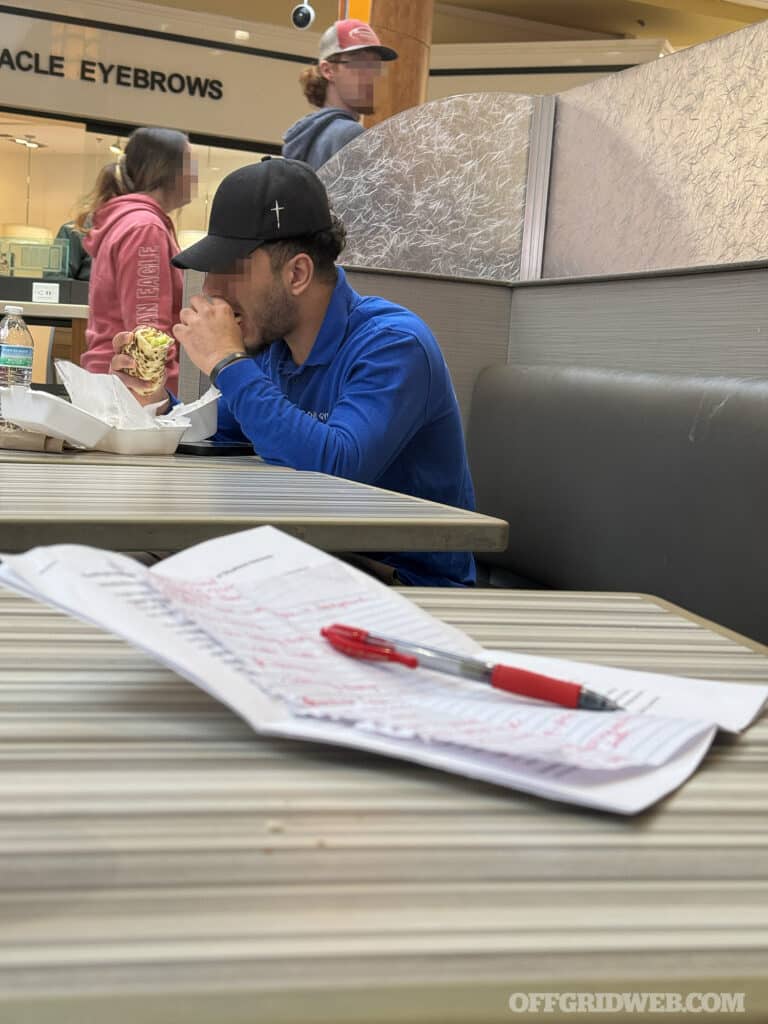
Having a hat pulled down and avoiding eye contact could mean deception or simply someone who is shy. Behavior analysis is definitely not an exact science in most situations.
Sweating & Subtle Trauma
Sweating is a key stress indicator. If someone appears clammy or you notice sweat stains in inappropriate conditions, it may be a sign they are nervous, ill, or under emotional strain.
Other biometric signs like bloodshot eyes, bruises, or nystagmus may indicate substance use, fatigue, or physical trauma. In tactical scenarios, be alert for pressure marks on shoulders or around the eyes; these could indicate concealed weapons, recent recoil, or gear straps. This sort of read helps to understand who is “packing” around you, so you can prepare accordingly.

Pointing during a conversation is often meant to talk down to a person. Avoid such practice unless it is absolutely necessary.
Being a good observer means understanding the mechanics of human vision. The eye is not a camera. It is a biological sensor full of limitations and bias.
Central & Peripheral Vision
The fovea, located in the center of the eye, is responsible for sharp, detailed vision. Everything outside that small central area falls under peripheral vision. While peripheral vision lacks detail, it is more sensitive to motion, especially biological motion. You might not clearly see someone walking behind a car, but your brain is tuned to notice the movement. When you’re purposely observing a person or situation, then make sure you turn your head and eyes to what you are looking at straight on. You will gather more information in that manner.
Peripheral vision is especially useful for spotting threats, but it is limited. Under stress, it narrows. This tunnel vision can make you miss critical information. Counter this by regularly scanning your environment and using deliberate head movement. This is also something that gives me a quick self-check. When I recognize my vision has narrowed, it begins the checklist toward letting me know I am overstressed and need to either step back and get a grip, or otherwise get over it with focus, breathing, or other things I have trained to calm myself.
Day, Night & Twilight Vision
Cone cells handle daytime (photopic) vision and are sensitive to color and detail. Rod cells, which support nighttime (scotopic) vision, are more sensitive to motion and light but not color. The Purkinje Shift causes reds to appear darker and blues to appear lighter in dim lighting. That is why it is easier to see blue objects at night than red ones. Twilight (mesopic) vision engages both rods and cones. During this time, depth and color perception can become unreliable. This is often the most vulnerable time for misreading your environment.
Instead of me just using a bunch of technical big words let’s make this more practical for all of us. The worst time of the day for clear vision is dawn or dusk. That is because our rods and cones are switching back and forth rapidly to deal with the increase and decrease of light due to shadows. When this occurs, our vision is poor. When I used to teach combatives, I was fond of telling runners to not run at those times, as it is hard to see threats. In addition to this, when it gets dark it takes a full 20 to 30 minutes for your eyes to completely adjust. Therefore, when you have the time, allow your eyes to adjust before you move around in the dark.
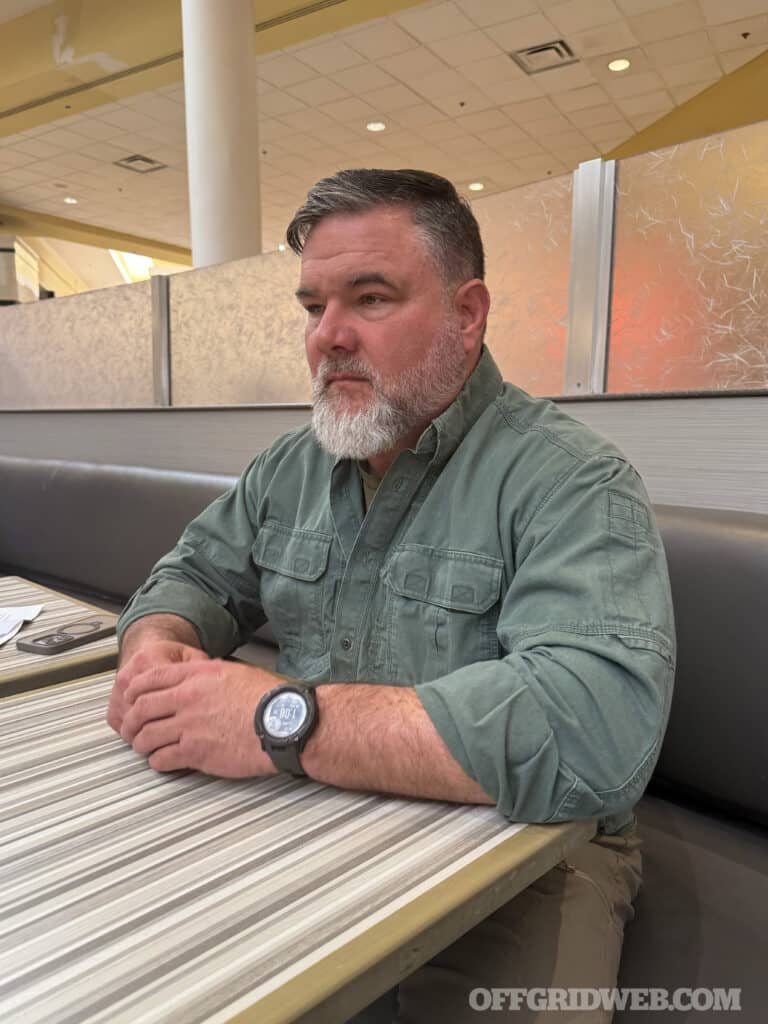
When talking, keeping your hands in front of your torso often indicates that your uncomfortable and protecting yourself.
One of the most powerful tools in behavioral recognition is the Rule of Three. One anomaly may be coincidence. Two may be curiosity. Three should trigger action. Consider it in an equation: Baseline + Anomaly = Decision Making. But when you have three anomalies, it means you must prepare for action.
• A man enters wearing a hoodie.
• He paces and scans the store but doesn’t shop.
• He adjusts something in his waistband.
That third cue is your green light to prepare for action or remove yourself from the area.
Cognitive Blind Spots
Even skilled observers are vulnerable to blind spots. These include:
• Change Blindness: The brain can ignore obvious changes in the environment when distracted. Combat this by scanning deliberately and pausing to reassess regularly.
• Focus Lock: Fixating on a single threat, person, or thing (your phone) can cause you to miss the bigger picture. Force yourself to shift your gaze and reevaluate surroundings.
• Assumptions and Bias: If you assume the person in a suit is safe and the person in a hoodie is dangerous, you may miss the real threat. Let behavior dictate your evaluation not stereotypes.
Reading people comes with responsibility. Using this skill to protect yourself or de-escalate a tense situation is ethical. Using it to manipulate, deceive, or exploit others is not. When in doubt, ask yourself: Am I helping someone be safer or just trying to gain an advantage?
Reading people is not about paranoia. It is about awareness. It is about noticing small, reliable cues and layering them into a fuller picture. Anyone can do it. With practice, it becomes second nature.
Start today. Observe group dynamics in a restaurant. Watch how people move in line at the store. Take note of blink rates, body posture, and spatial positioning. Over time, your awareness will sharpen, your instincts will refine, and you will be more prepared for both everyday life and high-risk moments.
Craig Caudill is the director of Nature Reliance School, where he teaches outdoor safety, survival, and tracking skills to individuals and organizations. An accomplished author of several books on backcountry skills, Caudill is also a sought-after consultant for national television and media, including shows like Naked and Afraid and America’s Most Wanted. With decades of experience in wilderness education and situational awareness, Caudill combines practical expertise with a passion for helping others develop resilience and self-reliance. Learn more at www.naturereliance.org.
Don’t miss essential survival insights—sign up for Recoil Offgrid’s free newsletter today!
Check out our other publications on the web: Recoil | Gun Digest | Blade | RecoilTV | RECOILtv (YouTube)
Editor’s Note: This article has been modified from its original version for the web.
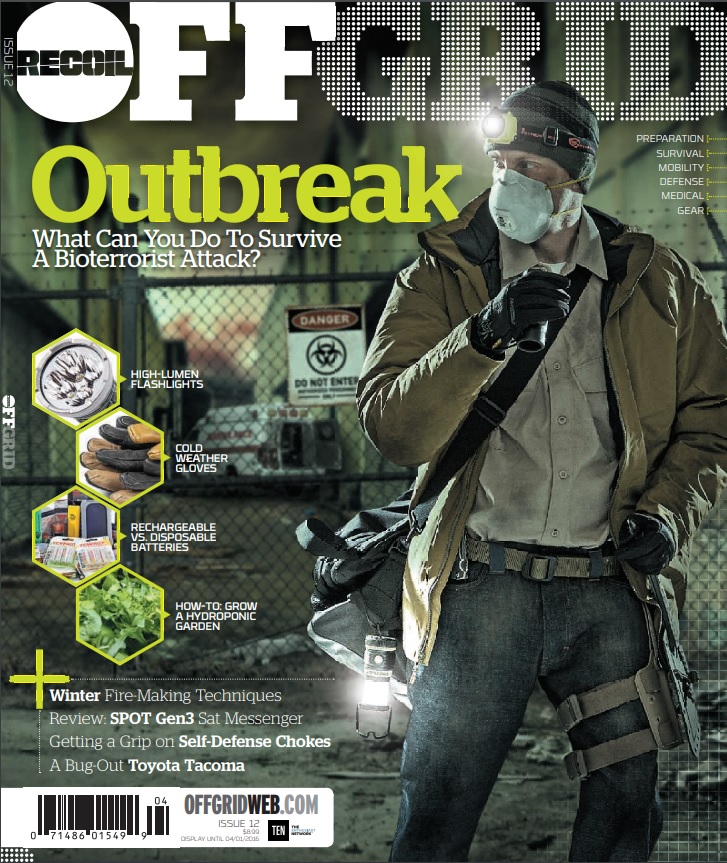 STAY SAFE: Download a Free copy of the OFFGRID Outbreak Issue
STAY SAFE: Download a Free copy of the OFFGRID Outbreak Issue
No Comments